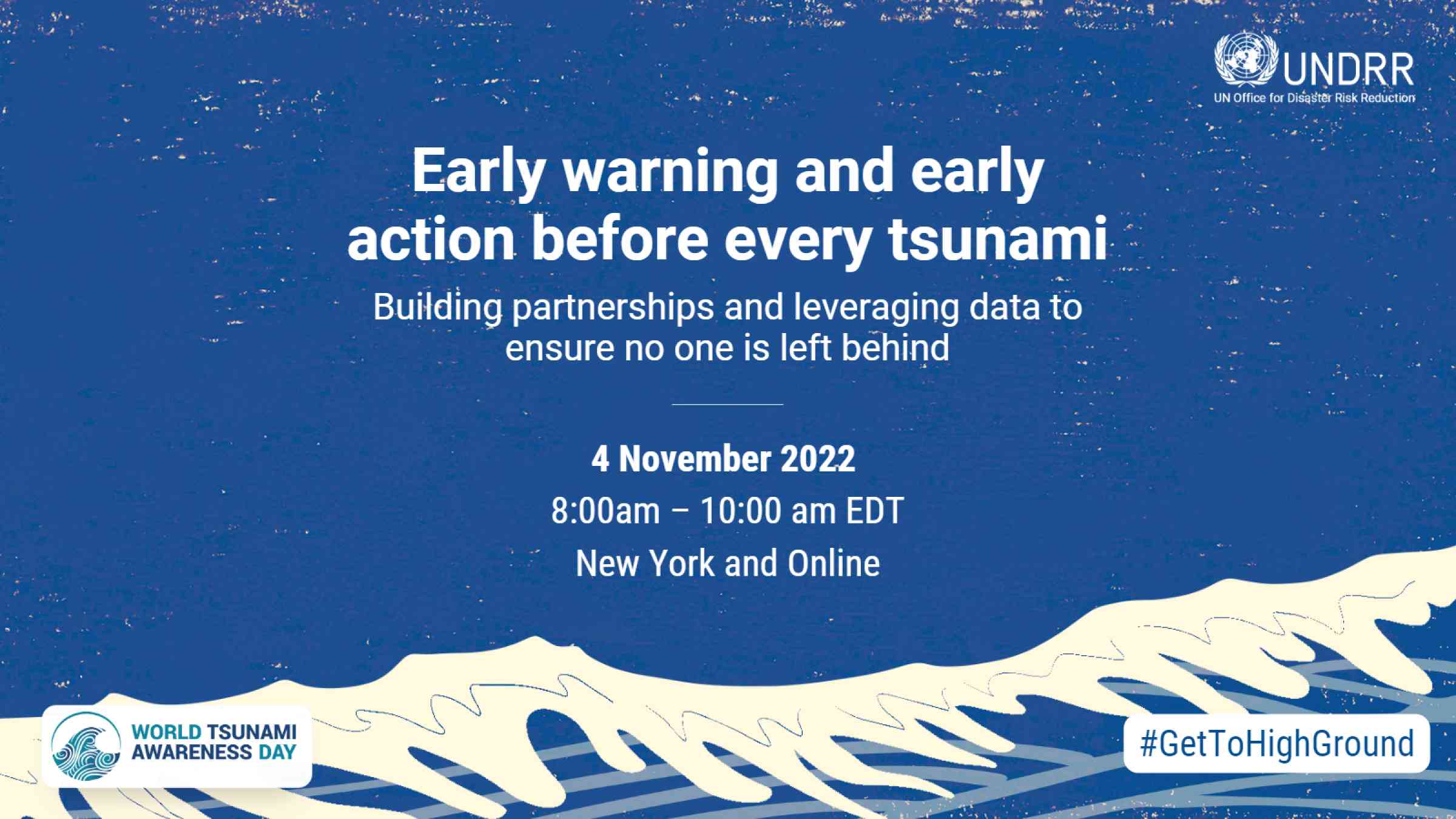WTAD 2022: Early Warning and Early Action Before Every Tsunami: Building partnerships and leveraging data to ensure no one is left behind

There will be captioning available.
Time
8:00am – 10:00 am
Background
Since 2016, advocacy around World Tsunami Awareness Day has called on countries, international bodies and civil society to raise tsunami awareness and share innovative approaches to risk reduction. As part of a multi-hazard approach to disaster risk reduction, participants will reflect on the importance of reducing tsunami risk through further developing accurate and timely tsunami warning systems that reach the last mile and strengthening participatory and inclusive disaster risk governance to act on early warnings.
The 2022 marking of World Tsunami Awareness Day will advocate for reducing tsunami risk globally through increasing access to early warning systems. This year’s theme of the International Day for Disaster Risk Reduction “Sendai Seven Campaign” is Target G of the Sendai Framework: “Substantially increase the availability of and access to multi-hazard early warning systems and disaster risk information and assessments to people by 2030.” Against the backdrop of the announcement by United Nations Secretary-General, Antonio Guterres to have every person on Earth covered by a multi-hazard early warning system within five years, this event will allow for a deeper dive into the need for whole-of-society approach to tsunamis preparedness and response to minimise the cascading impacts which can be triggered by these hazards.
Context
Though tsunamis are rare events, they are extremely deadly and costly sudden-onset hazards. Hundreds of millions of people live in low-lying coastal areas exposed to tsunami risk. By the year 2030, an estimated 50 per cent of the world's population will live in coastal areas exposed to flooding, storms and tsunamis. Scaling up international cooperation to developing countries will help ensure that 100% of communities at risk of tsunami are prepared for and resilient to tsunamis by 2030. The trillions of dollars that are needed to achieve the Sustainable Development Goals – particularly in these contexts – must be deployed in a risk-informed and resilient manner lest these investments end up as disaster risk and losses.
In this year of the Midterm Review of the Sendai Framework for Disaster Risk Reduction – it is all the more necessary for Member States, the United Nations system, civil society, academia, the scientific community, the private sector, and other stakeholders truly consider how to build resilience, foster a culture of early warning and early action, and minimise the risks posed by tsunamis and other hazards.
Exposure to natural hazards like tsunamis can have significant implications across sectors, geographies, and societies as cascading risk is left unassessed and unaddressed. Tsunamis must be treated as the multi-dimensional hazards that they are. Not only do they pose threat to human life, but to livelihoods, industry, agriculture, gender equality, and critical services such as education and healthcare. Access to high quality, readily available data is key to enhance early warning systems and reduce gaps in national dissemination mechanisms and local preparedness efforts across sectors and geographies.
Guiding questions
- What partnerships are needed to ensure universal coverage of early warning systems – particularly in relation to tsunamis?
- How can strides in satellite data, technology partnerships, and data science as well as stronger appreciation for local and indigenous knowledge be better used in tsunami awareness and affordable early warning and early action for developing countries?
- To fulfil our promise to leave no one behind, tsunami warnings must reach and be understood by even the most remote and rural communities. Where are the gaps in warning communications and how are these being bridged?
- What efforts have been made to strengthen capacity to develop accessible, understandable, usable and relevant disaster risk information and assessment available to the people at national and local levels?
Participants and format
Member States, civil society, academia, the scientific community, the private sector, and other stakeholders will be invited to attend the event at UN Headquarters.